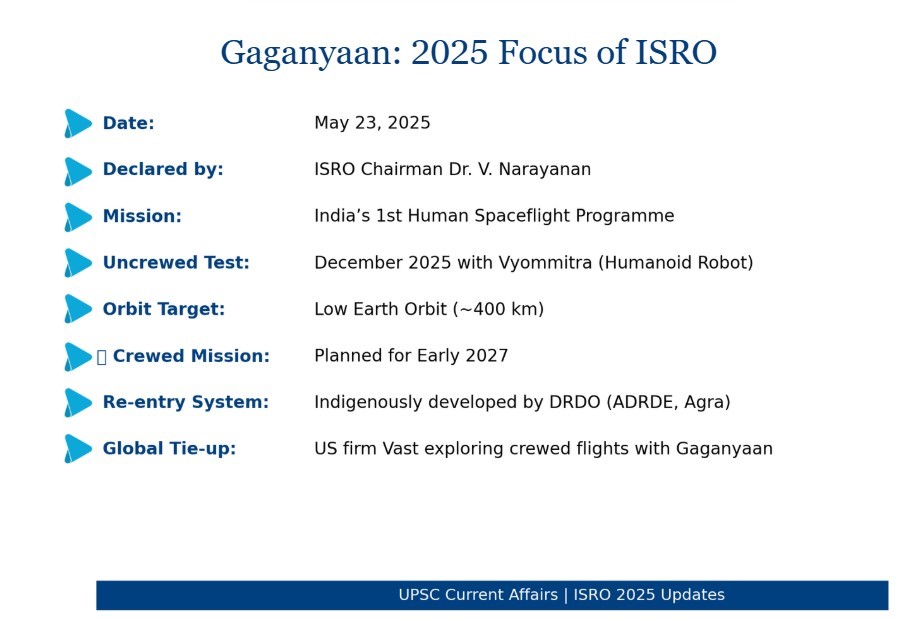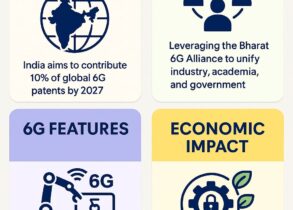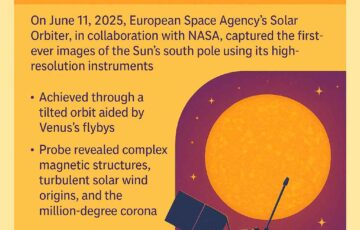Gaganyaan Declared Mission of the Year 2025 by ISRO Chief
Gaganyaan Declared Mission of the Year 2025 by ISRO Chief
On May 23, 2025, ISRO Chairman Dr. V. Narayanan officially declared 2025 as the “Gaganyaan Year,” highlighting a significant milestone in India’s space programme and digital infrastructure development. The Gaganyaan mission, a cornerstone of India’s digital public infrastructure initiatives, is India’s first human spaceflight endeavor, aimed at demonstrating the country’s capability to send humans into space and bring them back safely while advancing digital governance in space exploration. This mission is a testament to the progress of digitalized India and its commitment to developing digital public infrastructure, a topic of interest for UPSC aspirants studying digital public infrastructure UPSC syllabus.
The first uncrewed test flight is scheduled for December 2025, aligning with India timing for space missions. This flight will carry Vyommitra, a female humanoid robot developed by ISRO, showcasing efforts to bridge the gender gap in technology and space exploration. The objective is to test life support systems, safety protocols, and spacecraft performance in low Earth orbit (approximately 400 km). This mission will also showcase India’s advancements in cybersecurity and data protection for space operations, highlighting the country’s expertise in digital ID systems, including biometric authentication, and interoperable systems. The uncrewed flight will be followed by a crewed mission in early 2027, involving three Indian astronauts in a mission lasting around three days, further solidifying India’s position in digital transformation in developing countries and addressing rural-urban disparities in technological access.
To ensure the safe re-entry of the crew module, the Defence Research and Development Organisation (DRDO), through its Aerial Delivery Research and Development Establishment (ADRDE) in Agra, has developed a fully indigenous parachute-based deceleration and landing system. The setup includes apex cover separation parachutes, drogue parachutes for initial stabilization, and pilot and main parachutes for final descent. This technology demonstrates India’s commitment to digital public goods in the aerospace sector and its potential for cross-border digital services, strengthening India-Africa relations in the field of space technology and fostering India-Africa technology partnerships.
ISRO is also exploring international collaborations, emphasizing India-Africa technology partnerships and India-Africa collaboration in space exploration. These partnerships take into account India-Africa time zones for seamless communication and cooperation. U.S.-based aerospace firm Vast is considering the use of the Gaganyaan capsule for crewed missions to its commercial space station scheduled to launch by 2026. This highlights the global interest in India’s low-cost, reliable space technologies and showcases the potential for technology-driven partnerships in the space sector, paving the way for India-Africa digital trade and strengthening India-Africa economic ties. Additionally, initiatives like India-South Africa cooperation in space technology are being explored to enhance mutual capabilities.
Beyond Gaganyaan, ISRO has outlined several future missions that will contribute to socio-economic development and digital literacy:
- Chandrayaan-4 and Chandrayaan-5 for advanced lunar exploration and sample return, enhancing digital infrastructure development in space research.
- Bharatiya Antariksh Station by 2035, India’s own space station for long-duration space missions, incorporating sustainable power generation technologies and open-source platforms.
- Next Generation Launch Vehicle (NGLV) for heavier payloads and interplanetary missions, furthering India’s capacity-building efforts in space technology and supporting India-Africa digital skills training initiatives.
The Gaganyaan mission supports national goals such as technological self-reliance, strategic capability enhancement, and innovation-led economic growth, aligning with initiatives like Atmanirbhar Bharat and Digital India. This mission also serves as a platform for India-Africa education collaboration, promoting knowledge exchange in space sciences and digital technologies, fostering India-Africa innovation exchange. The mission’s success could potentially contribute to the India-Africa digital compact, a framework for collaborative digital growth, addressing challenges such as rural-urban disparities in technological access.
As India advances its space program, it continues to bridge the digital divide and promote digital inclusion through its technological achievements. The success of digital public infrastructure projects like Aadhaar, with its robust biometric authentication system, and CoWIN demonstrates India’s capability in developing robust digital solutions. These innovations, along with the potential applications of space technology in tele-medicine and tele-education, could be shared with African partners as part of South-South cooperation. Initiatives like DIKSHA, India’s digital learning platform, and the Pan-African e-Network project showcase India’s commitment to digital education and connectivity across the African continent. The establishment of IIT Zanzibar serves as a prime example of India’s educational outreach in Africa, further strengthening the India-Africa technology partnership.
The Gaganyaan mission not only propels India’s space ambitions but also strengthens its position as a leader in digital public infrastructure and digital diplomacy on the global stage. By leveraging its expertise in areas such as UPI-style instant payment systems, India can contribute significantly to the digital transformation of African nations, fostering stronger India-Africa technology partnerships and economic collaborations. This aligns well with the African Union’s Digital Transformation Strategy, creating synergies between India’s space technology advancements and Africa’s digital development goals. Initiatives like the Smart Zambia Initiative and the Smart Africa Alliance demonstrate the continent’s commitment to digital transformation, providing opportunities for collaboration with India’s advanced digital infrastructure.
In conclusion, the Gaganyaan mission represents a pivotal moment in India’s space exploration journey and its role in global digital transformation. By combining cutting-edge space technology with robust digital infrastructure, India is poised to make significant contributions to both sectors, benefiting not only its own citizens but also strengthening its partnerships with African nations in the digital age. The mission’s success will not only advance India’s space capabilities but also pave the way for increased African initiatives in India, fostering a mutually beneficial relationship in the realm of technology and innovation.







